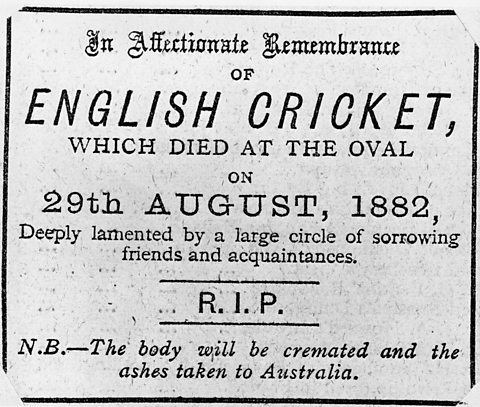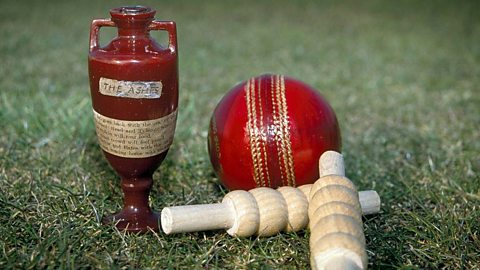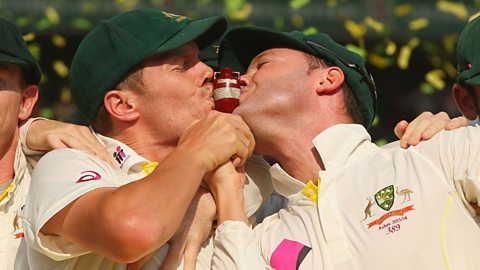It's unusual for an enduring sporting event to begin with its obituary, but that's how the Ashes was born.
While the competition gets underway to determine the latest winner of the cricketing series, there is a lot more to know about this famous rivalry than some alleged cremated bails encased in a tiny ceremonial urn. It’s a story which began almost 140 years ago.
On 29 August 1882 England were defeated by a heartbreaking seven runs in one of the most famous collapses in cricketing history.
It was Australia's first victory over the full strength of England on English soil.

The next day in the Sporting Times, a young English journalist, Reginald Shirley Brooks, published a mock “obituary” to English cricket.
"In affectionate remembrance of English cricket which died at The Oval, 29 August 1882. Deeply lamented by a large circle of sorrowing friends and acquaintances, R.I.P. - N.B. The body will be cremated and the Ashes taken to Australia.”
Before this defeat there was already a plan for Ivo Bligh to lead a team out to Australia for another series. So three weeks later they set out with the objective of recovering the (still metaphorical at this point) Ashes of English cricket.
England went on to win the series in Australia 2-1 and brought back the Ashes.
Bail or veil?
The story continues that while in Australia, a small urn, thought to contain the ashes of a bail used in the third match, were presented to Bligh by a group of women - one of which would later become his wife.
The text on the urn reads:
"When Ivo goes back with the urn, the urn;Studds, Steel, Read and Tylecote return, return;The welkin will ring loud,The great crowd will feel proud,Seeing Barlow and Bates with the urn, the urn;And the rest coming home with the urn."
In 1998, Bligh’s 82-year-old daughter-in-law said the urn actually contained the remains of her mother-in-law’s veil. Some people also say it holds the remains of a burnt ball cover.

No matter what is inside the urn, the ashes became a symbol for the rivalry between English and Australian cricket and was adopted as the name for the cricket series between the two nations.
The urn has never been used as the official trophy, but replicas are given to the winning side at the end of each Ashes series. The original urn is in the Marylebone Cricket Club museum in Lord’s ground, donated by Bligh’s widow in 1928. Regardless of which country wins the Ashes, it remains there on a permanent basis, although it has been allowed to make the trip to Australia on two previous occasions, in 1988 and 2006. A delicate object, it is displayed alongside a scorecard from the 1882 match which started it all.
Reginald Shirley Brooks made fun of the English cricket team's defeat, and 137 years later the Ashes are still being metaphorically regained and lost, year on year.
Ashes to ashes
But as it turns out the 'obituary' that named the series was more than a mere mockery. It has a fascinating family link between its author and a cause close to his late father's heart.
The footnote reads: “The body will be cremated and the Ashes taken to Australia.”
Shirley Brooks, father of Reginald, was a campaigner for the right to human cremation, which was still illegal at the time the 'obituary' was written.
In January 1874, Sir Henry Thompson, surgeon to Queen Victoria and chief promoter of cremation in England, called a meeting with his friends, in which a declaration was drawn up and signed by those present - including Reginald’s father. The declaration lead to the founding of the Cremation Society of Great Britain that same year.

Shirley Brooks died little over a month later and was buried.
But the campaign lived on, and cremation finally became legal in 1902. Given his father’s involvement in the campaign and Reginald’s inability to give him the funeral he desired, that quip about cricket cremation may have been more than a mockery, as a Guardian article from 2009 suggests.
If that's the case, politically speaking Reginald’s reference to the Ashes might not have had the impact he wanted, but in the world of cricket, what an innings.
A sporting contest
The cricketing aspect of the Ashes is no less fascinating, as the series alternates between England and Australia roughly every two years. The difference between summertime months in the northern (June to August) and southern (December to February) hemispheres also means the gaps between Ashes series vary in length as they flip between the two nations.
There were as little as four months between the beginning of the 2013 series in July and the following 2013-14 series in November, although this was to accommodate a shift in the schedule to prevent any conflict with the Cricket World Cup. The gap can also be long: England won the Ashes in February 1979 in Australia, but it was June 1981 before they could begin their successful defence on home soil.

There have been 70 Ashes series so far and the split is almost 50-50 between the two countries. Australia has won or retained the Ashes 33 times, compared to England's record of 32. The series has been declared a draw five times, which means the current holder of the trophy takes the title.
With England already securing the Cricket World Cup this summer, can they make it 33-all on the Ashes list? We'll know for definite by 16 September - or perhaps even earlier.
Origins of cricket jargon
What do ducks have to do with cricket? Find out here.

Cricket - essential skills and techniques. revision-guide
Click here to learn how to play cricket like a pro.

Oceania - Australia's Northern Territory
KS1 Geography
